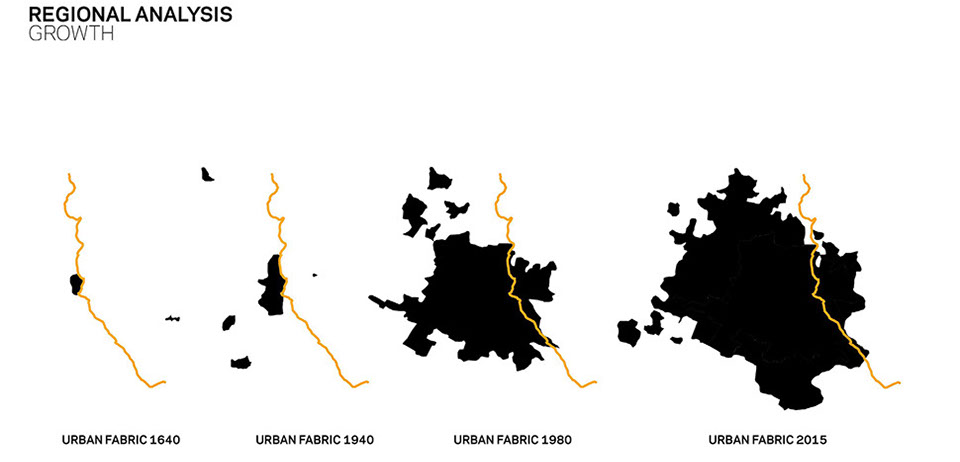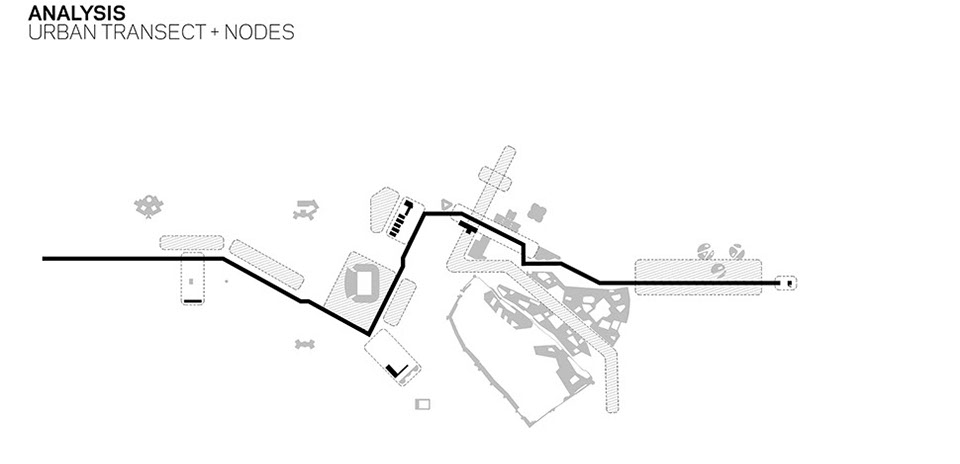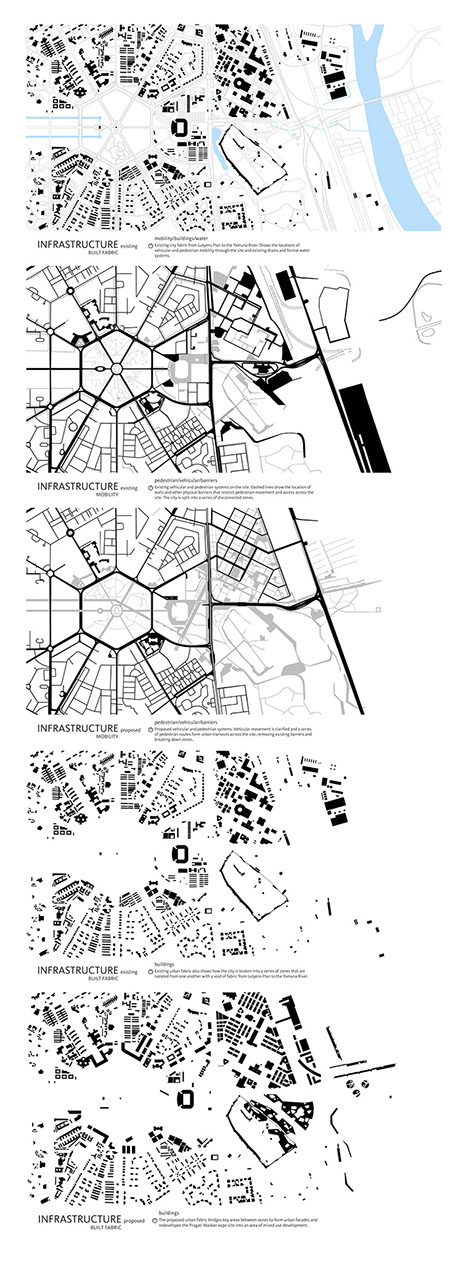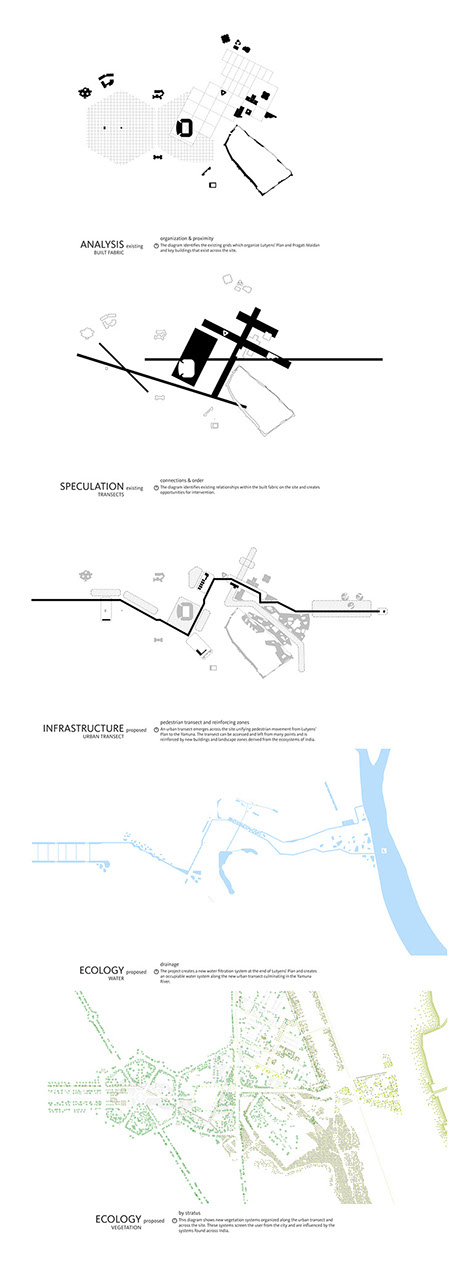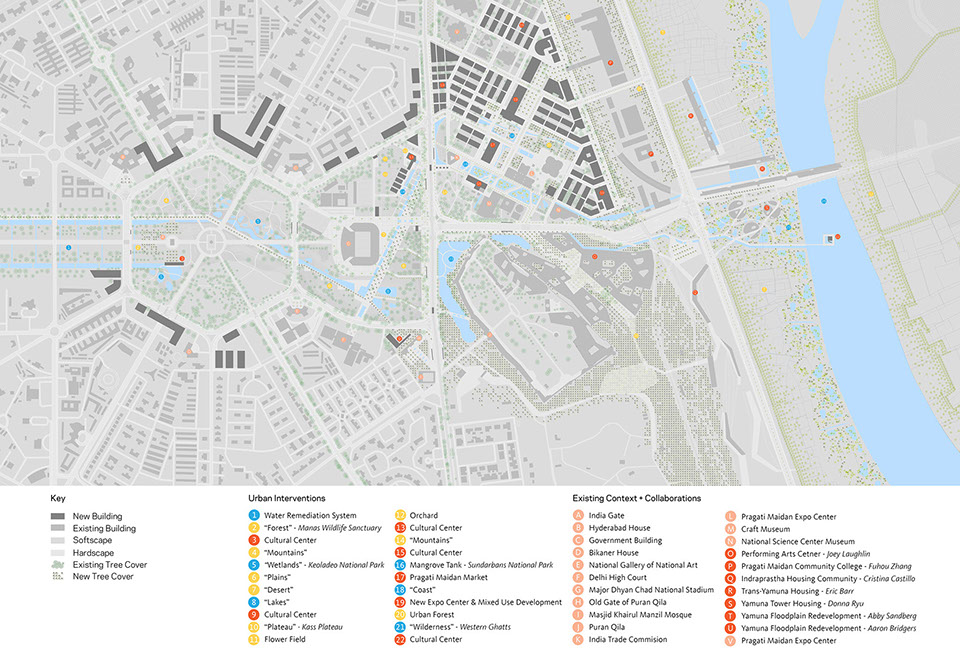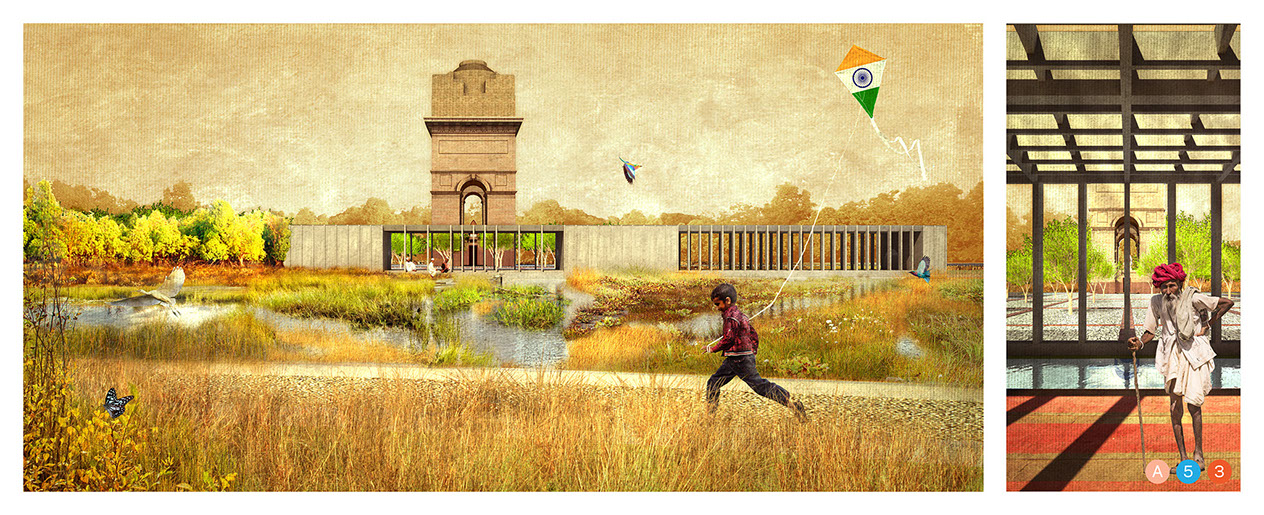The explosive development of Delhi after Imperial British rule began a process of development away from the river highlighted by a frayed urban fabric and lack of a shared social identity. Lutyens’ Plan epitomizes this physical and psychological divide; it is the continuation of a political power structure which resists moments of reflection and shared identity necessary for the development of a cohesive society, leading to issues of growth, waste, water, health, war, and oppression.
The urban project looks to create a situation in which a shared identity can emerge. It analyzes the city by transect, not zones, and seeks to reveal the latent identity and memory of the urban fabric shared by its people. New transects and urban zones are divulged retroactively, stitching together the city and creating new relationships and memories.
A new cultural forum is founded by stitching together existing fabric and creating new adjacencies: a Cultural Transect for an Independent India. Independence is a march. A march from oppression towards transcendence in which history and identity is constructed through a sequence of events; a progression of ancient forms and landscapes found across the many diverse regions of India. This sequence creates a network between the past, present, and future; nature and city; culture, education, the arts, creating a shared democratic space. The project allows identity to emerge through moments of recognition and shared experience.

